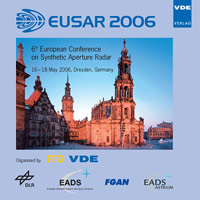Recent Development of Radar Remote Sensing: Air and Spaceborne Multimodal POL-SAR, IN-SAR, POLinSAR and POL-DIFF-IN- SAR Sensing and Imaging with Applications to Environmental and Geodynamic Stress-change Monitoring
Konferenz: EUSAR 2006 - 6th European Conference on Synthetic Aperture Radar
16.05.2006 - 18.05.2006 in Dresden, Germany
Tagungsband: EUSAR 2006
Seiten: 4Sprache: EnglischTyp: PDF
Persönliche VDE-Mitglieder erhalten auf diesen Artikel 10% Rabatt
Autoren:
Boerner, Wolfgang-Martin (UIC-ECE Communications, Sensing & Navigation Laboratory, CHICAGO IL/USA)
Inhalt:
Worldwide, medium- to short-term earthquake prediction is becoming ever more essential for safeguarding man due to an un-abating population increase, but hitherto, there have been no verifiable methods of reliable earthquake prediction developed - except for a few isolated examples of such in China and in Greece. This dilemma is a result of previous and still current approaches to earthquake prediction which are squarely based on the seismic measurement of crustal movements, observable only after a tectonic stress-change discharge (earthquake) has occurred. The prediction models derived from past histories of measurements were mainly carried out during the past 40 – 50 years, although initiated soon after the San Francisco Earthquake of 1906. During the past decade it was proved and shown that it is not possible to derive reliable models for earthquake predictions from crustal movement measurements alone - as valuable and as indispensable those indeed are - and that an entirely new approach must be taken and rigorously pursued over many years and decades to come, and most likely throughout this twenty-first century. Of considerable importance will be the full integration of multi-band (P – K Band) repeatpass differential interferometric Polarimetric Synthetic Aperture Radar (POL-SAR) space borne and high-altitude platform monitoring operations which will be considered here in conjunction with “seismo-electromagnetic” ground measurements. It will be shown that Taiwan is ideally suited for studying earthquake related electromagnetic precursor studies in that the island is separated from other continental regions, and there exist the resources, the dedication and will power for advancing our knowledge most rapidly. Both land-based and suboceanic measurement networks already exist, which need to be upgraded and perfected. With the aid of experienced and knowledgeable experts, this will be done soon.


